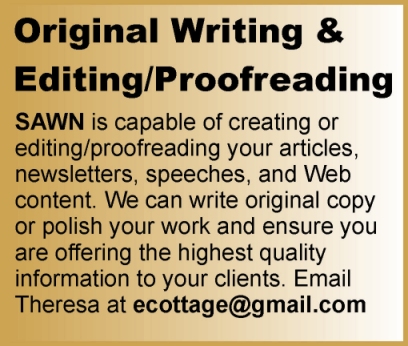“Personal” space in today’s world
Everyone wants their space; everyone enjoys being alone sometimes and having at the minimum some time to focus on themselves – or at least everyone deserves such a “space”. by Scott Bruce – Guest writer – see his CV here In today’s world “space” isn’t as freely available as it used to be. I’m not talking about physical space-well, not entirely. People are constantly connected today, most people are never in essence “alone”. Perhaps you are home alone – lucky; but thanks to the ever welcome advances in technology, there is a plethora of devices for you to choose from –and a billion friends on the other side of *twilight zone music*. For most people, getting a hold of one of their friends or family members is literally as easy as making a phone call or sending an email message; making things easier yet less special and far too frequent for some. When was the last time you wrote or received a letter? People do not take the time to write letters anymore and I understand why. Letters are tedious – and not everyone has the best penmanship – but everyone’s typing is legible. For some, the personal touches are left out all together. Finding your soulmate or “play mate” (to be serious) is as easy as downloading an application and finding the nearest heart-beat. People have met their soul mates, been dumped by way of a text message, and lost all their dignity through a “sext” scandal – and they didn’t even leave the house. The world is a scary place, and thanks to our own desire to communicate incessantly, we have invited the scary world into our homes – and into ourselves. A recent survey conducted in the US reveals that today’s youth are being bombarded with irrelevant information from their smartphone. The survey revealed that 51% of Millennials cannot go more than three hours without checking their smartphone. Some may even argue that the current generation is addicted to being “always connected”, constantly being able to find the answer to almost any question; sharing every situation and capturing it all on video – this is the world we all live in. Due to the constant use of technology, people are becoming overwhelmed with information, connections and personal files. A photo used to have meaning but today we take thousands of irrelevant photos on a monthly basis, which we “share” with people we do not even know on the Internet for the gratification that people “like” you. We live in a world of constant information; important information has become clouded with trivial bits and pieces of others lives – 50 or so years ago one would receive a letter addressing the important details of someone’s life – however, today we no longer have the “gap” of distance. People update each other on their every movement, like and dislike – constantly. This constant connection subtracts a great deal from the “personal” factor of life. Slowly but surely people are moving along a path of similarity, losing what makes us individuals. We shape our lives based on what is considered appropriate by the rest of the world; peers matter, yet with technology growing at the rate it is, as well as Social Media becoming an integral part of everyday life, your “peers” are no longer your family and friends, but rather the whole world – you’re connected. Constant comparisons are made; we see what others are doing and we strive to do the same – why? – because everything sounds amazing in theory on social...
Read MoreFind Your Target Audience
Very few books – if any – appeal to a nonspecific audience. It is therefore necessary to find your books target audience before you start trying to appeal to ‘everyone’. Bear in mind, one of the main reasons people will be interested in your book is because the subject matter appeals to them on a personal level. Profit Motive Many book publishers naturally favor books that will attract a wide readership; their chief objective being to generate volume sales and subsequently a larger profit margin. However, the risk of poor sales is often the case because the larger the market the more competition you are likely to encounter and the bigger the drain on expenses to explore unique ways to make the book stand out above the rest. Reader Profile Hence, instead of trying to create a book that has mass appeal, it is wise to explore the needs, wants and desires of a realistically sized ‘niche’ target audience instead. To do this the author must identify and research what the intended target reader finds fascinating [ideally before writing the book], and establish unique and meaningful viewpoints to achieve this expectation. It helps to know what your central philosophy is in writing and wanting to publish a book, and why it is important that you share your views with readers. It is important to gain clarity about your own expectations and the message you put across so that you can deliver a convincing pitch that highlights your work’s benefits, points of difference, and unique qualities. The author will find it easy to answer a question like, “What makes your book so compelling that a customer would choose it over a similar publication, or another author in the same genre?” An author’s understanding of the competitive nature of attracting the attention of potential buyers makes it easier to discern who is most likely to buy their book and what it takes to make it stand out from other books in the same category. Who do you need to reach? Segment a broad market into distinct groups of individuals [men, women, young children, academics, adolescents, business executives, and so forth] who are like-minded or share specific behavioral characteristics. Geographic – Where do your potential readers live [country, region]? What is their home language? Do they live in an urban or rural environment? Demographic – What is the age and gender of your target reader? Occupation? Generation: Baby boomer? Gen X? Gen Y? Behavioral – Are they already fans of your genre/topic)? What motivates them? What are their reading preferences: eBook, Print? Where Can You Find the Answers? The answers to the above questions should not be left to guess-work. Consider asking followers on your social networks to complete a short questionnaire to better understand how to serve your potential readers. Ask questions in emails and your blog posts. Join forums and writers’ clubs that discuss book topics or genre to find out more about your potential target audience. Search for similar books in retail outlets and online, and investigate the books on author websites. Learn what type of content is shared [reviews, book signings, author biography, author interview] and what platforms are used to share information about a publication. Do an online search for reader demographics for magazines or publications relevant to the subject of your book. Reach your audience by engaging with your target audience by monitoring mentions of your book (Google Alerts), and stay up to date with what other authors, bloggers, and industry leaders are talking about; also contribute to the dialogue (Feedly, AllTop, Google...
Read More





 I’m a published author of four business books and have written a number of self-study tutorials [creative writing; editing and proofreading; business writing; and self-publishing] and an eBook [Workplace Harmony]. I am an experienced writer, editor and publisher.
I’m a published author of four business books and have written a number of self-study tutorials [creative writing; editing and proofreading; business writing; and self-publishing] and an eBook [Workplace Harmony]. I am an experienced writer, editor and publisher. 




